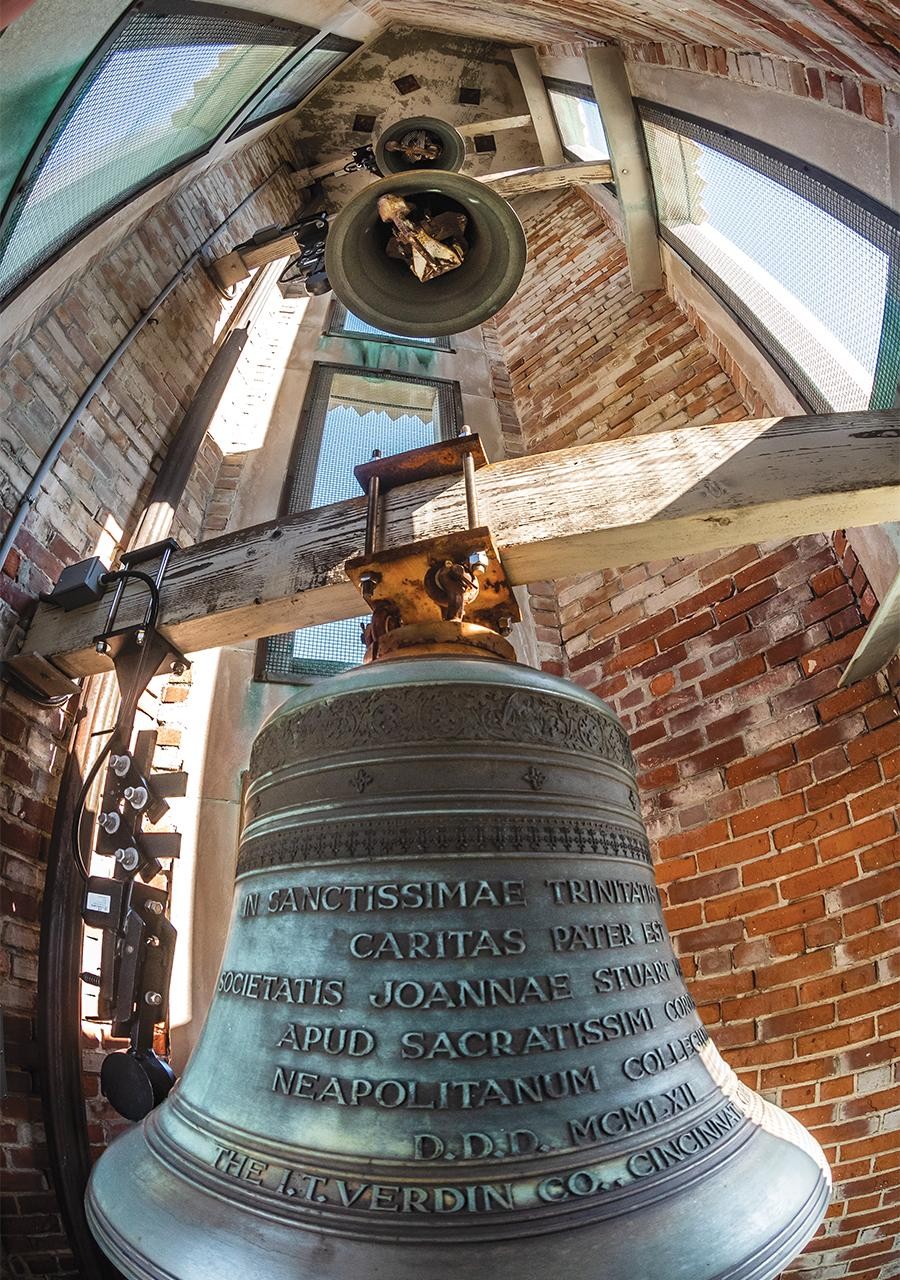In the fall of 1961, some 13 years before the property would be sold to Boston College, the Newton College of the Sacred Heart placed an order with the I.T. Verdin Company of Cincinnati, Ohio, for a three-bell carillon, as part of the college’s soon-to-be Chapel of the Most Blessed Trinity.
A handwritten order detailed the particulars, including “a 31½” dia, 704 lb., ‘B’ note bell; 25″, 341 lb., ‘D sharp’ bell, and a 21 ½”, 220 lb., ‘F sharp’ bell.” The cost of this B major chord was $5,583 (or $46,000 today). Cast in the Netherlands, the bronze bells were installed in the chapel’s 69-foot-tall tower the next spring. The Latin inscription on the largest (the B) translates as, “To the glory of the most holy Trinity/The Father is Love/The Society of Janet Stuart Jointly [dedicated this]/At the Newton College of the Sacred Heart,” according to associate classics professor Kendra Eshleman.
How often the bells chimed or what peal they played is unknown (the bells did not swing but were struck by electrically driven clappers located inside them). At some point lost to history, they fell silent. Last summer, Boston College’s facilities department undertook a restoration of the rusted-out chiming system. “It gets a lot of weather up there,” says University electrician Kevin Simard, the man tasked with replacing the electrical controls.

The B bell and its new striker. Defunct interior strikers can be seen in the two upper bells. (Photo by Lee Pellegrini)
Removing the old strikers risked damaging the bells, so they were left in place, and new ones, fabricated in Belgium, were designed to strike the exterior of the bells. The new clappers are cast-iron discs that resemble oversized hockey pucks (the one for the B bell weighs approximately 70 pounds). The clappers, which were installed by New Vibrations Audio & Video of Morrisdale, Pennsylvania, are activated by an electromagnetic system attached to the support beam above each bell. An electrical impulse sent from a ground-level control box propels the concussion. The impulse lasts just a few microseconds, after which the spring-loaded clapper returns to the open position. The disc travels barely one quarter of an inch, but the sound can be felt on the ground.
The carillon was returned to action on July 27, 2018, and the bells now toll every 15 minutes from 9:00 a.m. to 6:00 p.m., Monday through Friday. At 15 minutes after the hour, the system sounds two notes, adding two more at each subsequent 15-minute stage until culminating on the hour with a complete eight-note peal (it has been called a modified Westminster peal; a proper Westminster, as played by the bells in Gasson Tower, requires four bells). At the top of the hour, the large bell also strikes the time.
A casual survey of passersby—freshmen mostly, and law students—suggests the bells have blended easily into the regular campus hum, like a slight stir in the air. But a few who paused to consider their sounds from a sidewalk opposite the tower in late October echoed the sentiments of a young woman living in Hardey House, a hundred yards from the chapel. “I know they’re there,” she said. “I enjoy them; I find them soothing. And, in the morning, I’m like, ok, time to get up.”
—Thomas Cooper | Boston College Magazine




